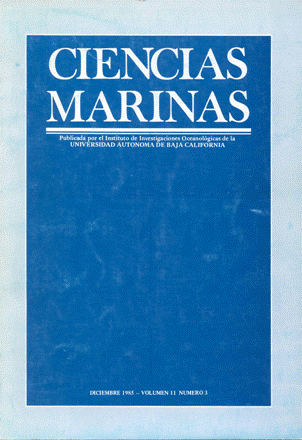Effects of salinity on the growth rate, morphology and water content of some Brazilian red algae of economic importance
Main Article Content
Abstract
The growth rate, morphology and water content of six species of Brazilian red algae of economic importance were studied under various salinities. The study comprises three agarophytic (Gracilaria aff. venucosa, Gracilaria sp. and Pterocladia capillacea), and three carrageenophytic algae (Meristiella echinocarpa, Hypnea cornuta and H. musciformis), subjected to salinities from 5 to 60‰. Al species tolerated, for the period and conditions described, a much broader range of salinities than they usually face in their habitats. All species were more tolerant to salinities above 30‰ than below this value, with maximum growth occurring between 25-40‰. Water content at the end of the experiments varied with the species, with an inverse relation in salinities above 40‰. Highest salinity values reduced branching, and lowest salinities lead to thalli bleaching. The results offer guidelines for the selection of potential areas with more adequate salinity regimes for the cultivation of the species studied.
Downloads
Article Details
This is an open access article distributed under a Creative Commons Attribution 4.0 License, which allows you to share and adapt the work, as long as you give appropriate credit to the original author(s) and the source, provide a link to the Creative Commons license, and indicate if changes were made. Figures, tables and other elements in the article are included in the article’s CC BY 4.0 license, unless otherwise indicated. The journal title is protected by copyrights and not subject to this license. Full license deed can be viewed here.

